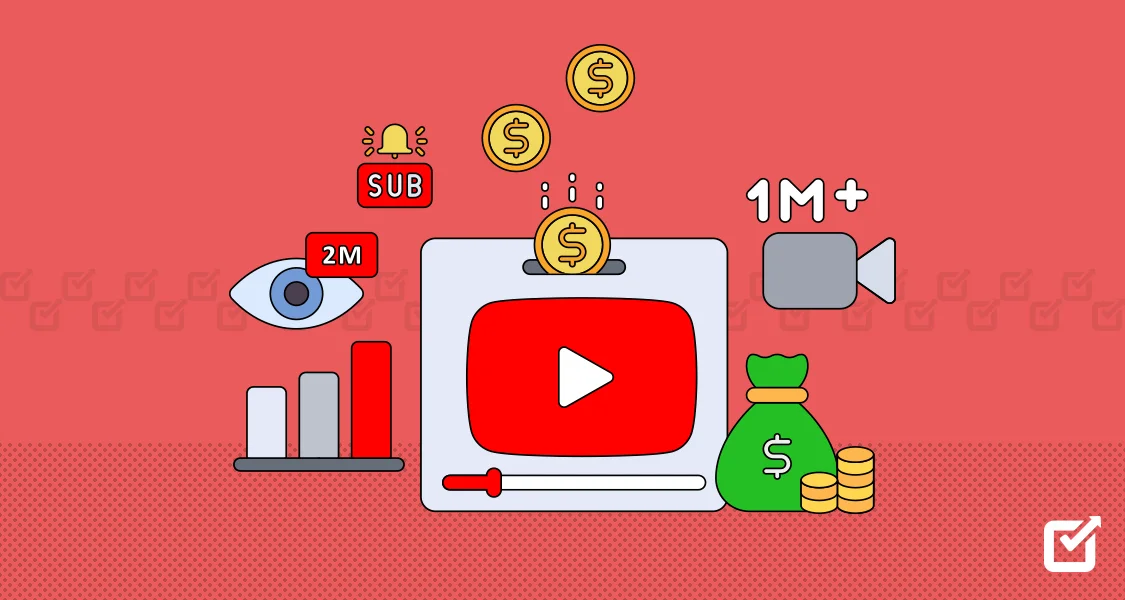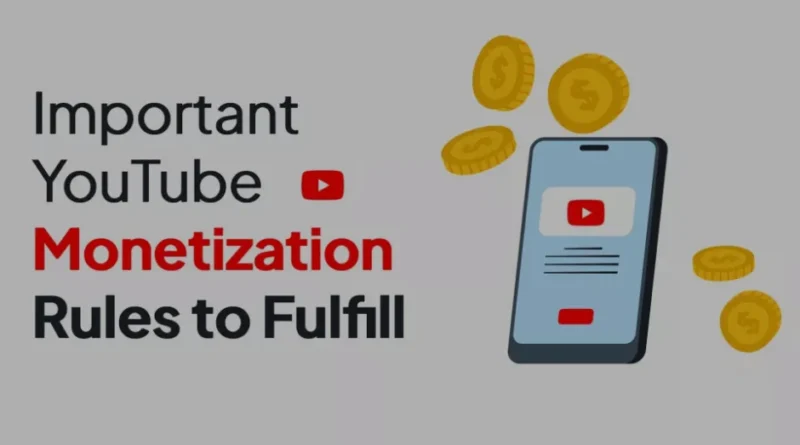YouTube’s New Monetisation Policy: What It Means for Creators in 2025
On July 15, 2025, YouTube will implement a significant update to its YouTube Partner Programme (YPP) monetisation policy, targeting “mass-produced, repetitious, or inauthentic” content. This change, driven by the rise of low-effort, AI-generated videos, aims to elevate platform quality and reward authentic creators. For the millions of content creators worldwide, from small-scale vloggers to established influencers, this policy shift introduces both challenges and opportunities. This article explores the impact of YouTube’s new rules, offering unique insights, local context, and practical advice to help creators thrive, all while adhering to Google AdSense standards for originality and value.
Understanding the Policy Update
YouTube’s updated policy refines its long-standing requirement for “original and authentic” content, renaming its “repetitive content” guidelines to “inauthentic content” to better reflect modern trends. Starting July 15, 2025, the platform will enhance its detection of videos that are mass-produced, repetitive, or lack meaningful value, such as AI-generated listicles, templated slideshows, or minimally edited clip compilations. While the core eligibility criteria for YPP remain unchanged—1,000 subscribers plus either 4,000 public watch hours in the past 12 months or 10 million Shorts views in the last 90 days—the review process will now scrutinize content quality more rigorously.
YouTube has not explicitly banned AI tools or reaction videos, but creators must add significant value through commentary, analysis, or creative storytelling to qualify for monetisation. Videos that rely on synthetic voices, stock footage, or reused content with minimal edits risk demonetisation or removal from YPP. The platform’s goal is to curb low-effort uploads that clutter the site, ensuring a better experience for viewers and advertisers.
Impact on Creators: Opportunities and Challenges
The policy update will reshape the creator landscape, with varying effects based on content type and creative approach:
- Positive Impact for Authentic Creators: Creators producing original, high-quality content—such as vlogs, tutorials, or storytelling videos—stand to benefit. By prioritizing authenticity, YouTube enhances visibility for channels offering unique perspectives, potentially increasing ad revenue and audience engagement. For example, educational channels with in-depth research or entertainment channels with original sketches will face no disruption.
- Challenges for Reaction and Compilation Channels: Reaction videos, clip compilations, and AI-driven channels face heightened scrutiny. Creators who simply re-upload clips or add minimal commentary risk losing monetisation. To stay compliant, they must transform content with substantial edits, personal insights, or educational value. For instance, a reaction video pausing to offer detailed analysis or a compilation with creative narration could still qualify.
- AI-Generated Content Under Fire: The rise of low-cost AI tools has flooded YouTube with synthetic videos, such as automated listicles or robotic voice overs on stock footage. These channels, often designed to maximize views with minimal effort, are the primary targets. Creators using AI must integrate human input, like unique narration or editing, to avoid demonetisation.
- Increased Competition: With low-effort content sidelined, competition among authentic creators may intensify. Smaller channels will need to invest in quality to stand out, while established creators with loyal audiences may see greater rewards.
Unique Insights: What Sets This Update Apart
This policy shift is more than a crackdown; it’s a strategic pivot with far-reaching implications:
- Protecting Advertiser Trust: YouTube paid over $70 billion to creators and media companies from 2021 to 2023, but low-quality content risks alienating advertisers. By filtering out “spam” videos, YouTube ensures ads appear alongside valuable content, boosting its ad business and supporting Alphabet’s AI training efforts, such as its Gemini models.
- Balancing AI Innovation and Authenticity: YouTube isn’t banning AI outright, recognizing its value in editing or content creation. Instead, it’s targeting “lazy” AI usage. Creators who blend AI tools with human creativity—such as using AI for animations but adding personal narration—can still monetise, fostering innovation while maintaining quality.
- Power Imbalance Concerns: Smaller creators, particularly those reliant on reaction or compilation formats, face higher risks of demonetisation due to inconsistent enforcement. Posts on X highlight fears that YouTube’s vague definitions of “inauthentic” could unfairly target new creators, while bigger channels may escape scrutiny.
- Long-Term Platform Health: By prioritizing quality, YouTube aims to retain viewers who might otherwise turn to competitors like TikTok or Twitch. This move counters the “content farm” trend, where AI-generated videos dilute viewer engagement, ultimately benefiting creators who invest in originality.

Local Context: India’s Creator Economy
India, with over 700 million internet users and a booming creator economy, is deeply affected by this update. Cities like Mumbai, Delhi, and Bengaluru are hubs for YouTube creators, from tech vloggers to regional language entertainers. Indian creators, who often rely on Shorts to hit the 10 million view threshold, face unique challenges. The policy’s focus on authenticity could limit faceless, AI-driven channels common in India’s tech and news niches, which often repurpose content with minimal edits.
However, the update also offers opportunities. India’s diverse cultural landscape allows creators to craft authentic content rooted in local languages, traditions, or trends. For example, creators like those on the Tamil Nadu-based channel Village Cooking Channel thrive by showcasing unique culinary stories, aligning perfectly with YouTube’s new standards. Posts on X from Indian creators reflect cautious optimism, with one stating, “This forces us to be more creative, which is good for India’s YouTube scene”.
Practical Tips for Creators
To navigate the new policy, creators should adopt these strategies:
- 1. Focus on Originality: Create content with a unique voice, whether through personal narration, creative editing, or original storytelling. Avoid relying solely on AI-generated scripts or stock footage.
- 2. Add Value to Reused Content: For reaction or compilation videos, include in-depth commentary, analysis, or humor. Pause clips to offer insights or transform them with creative edits.
- 3. Leverage AI Wisely : Use AI tools for editing, animations, or thumbnails, but ensure human input dominates. A synthetic voiceover paired with original analysis can still qualify.
- 4. Review Your Channel: Audit recent uploads for repetitive or low-effort content. Delete or rework problematic videos before applying for YPP to avoid rejection.
- 5. Engage Your Audience: Build a community through storytelling or educational content to boost watch time and loyalty, which aligns with YouTube’s viewer retention goals.
- 6. Monitor Updates: Check YouTube’s Help Center or follow @TeamYouTube on X for clarifications, as enforcement details may evolve post-July 15.
Credible Sources and Data
This article draws from authoritative sources to ensure accuracy:
- The Hindu: Reported YouTube’s July 15, 2025, policy update targeting mass-produced content, emphasizing originality and its impact on AI-driven channels.
- Times of India: Clarified that reaction and compilation channels aren’t banned but must add value, with unchanged thresholds of 1,000 subscribers and 4,000 watch hours or 10 million Shorts views.
- The Economic Times: Detailed the policy’s focus on significantly altered content and its aim to curb clickbait and templated videos.
- TechCrunch: Note YouTube’s clarification that the update is a “minor” refinement to detect inauthentic content, not a sweeping ban on reaction videos.
- X Posts: Reflected creator concerns about enforcement fairness and optimism about promoting authenticity.
YouTube’s liaison, Rene Ritchie, emphasized, “This is a minor update to our long-standing YPP policies to help better identify when content is mass-produced or repetitive,” confirming that such content was always ineligible for monetisation.
The Road Ahead
YouTube’s policy update reflects its broader mission to balance creator freedom with platform quality. While it may challenge creators reliant on low-effort formats, it rewards those who invest in originality, aligning with viewer and advertiser expectations. For India’s creators, this is a chance to leverage cultural storytelling to stand out. Globally, the policy could reshape YouTube’s ecosystem, favoring authentic voices over automated content farms.
Creators should see this as an opportunity to innovate, whether through unique narratives or enhanced production quality. As YouTube competes with TikTok and Twitch, its focus on authenticity could strengthen its position as the go-to platform for meaningful content. Stay proactive, adapt to the new rules, and keep creating—because originality is now the currency of YouTube success.
Disclaimer
The information presented in this blog is derived from publicly available sources for general use, including any cited references. While we strive to mention credible sources whenever possible, Web Techneeq –Best Website design Company in Mumbai does not guarantee the accuracy of the information provided in any way. This article is intended solely for general informational purposes. It should be understood that it does not constitute legal advice and does not aim to serve as such. If any individual(s) make decisions based on the information in this article without verifying the facts, we explicitly reject any liability that may arise as a result. We recommend that readers seek separate guidance regarding any specific information provided here.

